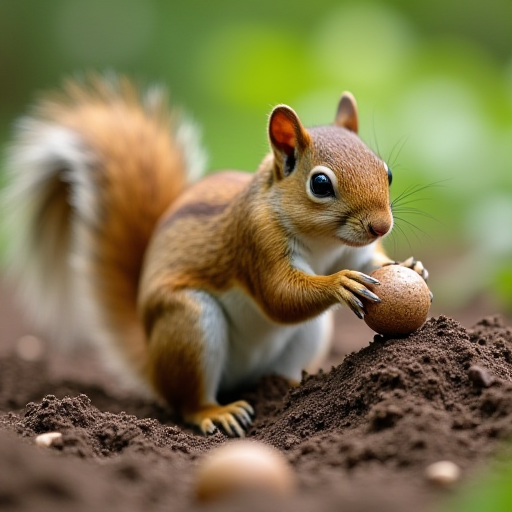
Why Do Squirrels Bury Nuts?
Squirrels are fascinating creatures that have adapted remarkably well to diverse environments. One of their most intriguing behaviors is their habit of burying nuts. This seemingly simple act plays a crucial role in their survival and has broader ecological implications. This article delves into the reasons why squirrels bury nuts, the methods they use, and the impacts of this behavior on ecosystems.
The Purpose Behind Burying Nuts
1. Survival Strategy
The primary reason squirrels bury nuts is to ensure their survival during food-scarce months. Many squirrel species, particularly those in temperate regions, face a lack of food during winter. By burying nuts in the fall, they create a food reserve that they can rely on when resources are scarce.
2. Food Caching
Squirrels practice what is known as "food caching." This is a strategy where animals store surplus food in times of abundance to consume during periods of scarcity. There are two main types of caching:
- Larder Hoarding: This involves storing large amounts of food in a single location, such as a hollow tree.
- Scatter Hoarding: This involves storing food items in numerous small caches, which is the method most commonly used by squirrels.
3. Protection from Competitors
By burying their food, squirrels protect it from competitors, including other squirrels and animals such as birds and rodents. Scattering the caches reduces the risk of losing all their stored food to a single thief.
4. Reduction of Spoilage
Burying nuts also helps in preserving them. Underground storage provides a stable environment that reduces spoilage. The cool, moist soil helps to prevent nuts from drying out and going bad.
The Process of Burying Nuts
1. Selection of Nuts
Squirrels are selective about which nuts they choose to bury. They often pick nuts that are more likely to remain viable and nutritious over time, such as acorns, walnuts, and pecans. Larger nuts with hard shells are preferred as they are less likely to be eaten by insects and other small creatures.
2. Spatial Memory
Squirrels have an impressive spatial memory, which allows them to remember the locations of their caches. They are known to use landmarks to help locate their buried nuts. However, not all caches are retrieved; some estimates suggest that squirrels only recover about 25-50% of their buried food.
3. Scent Masking
To prevent other animals from finding their caches, squirrels may engage in deceptive practices such as pretending to bury a nut in one spot while actually hiding it elsewhere. They also use their paws to mask the scent of buried nuts by disturbing the surrounding soil.
Ecological Impact of Squirrels Burying Nuts
1. Forest Regeneration
The nuts that squirrels fail to retrieve often germinate, leading to the growth of new trees. This behavior significantly contributes to forest regeneration and the spread of various tree species.
2. Biodiversity Support
By helping to plant new trees, squirrels indirectly support a wide range of biodiversity. Forests provide habitats for numerous species, and the growth of new trees ensures the sustainability of these ecosystems.
3. Soil Aeration
The act of burying and retrieving nuts also aerates the soil. This process improves soil health and promotes the growth of plants by enhancing nutrient circulation and water infiltration.
Conclusion
The behavior of squirrels burying nuts is a sophisticated survival strategy that has evolved over time. It ensures that squirrels have a reliable food source during harsh conditions and plays a vital role in maintaining healthy and diverse ecosystems. Understanding this behavior provides insight into the intricate balance of nature and highlights the importance of even the smallest creatures in ecological systems.
